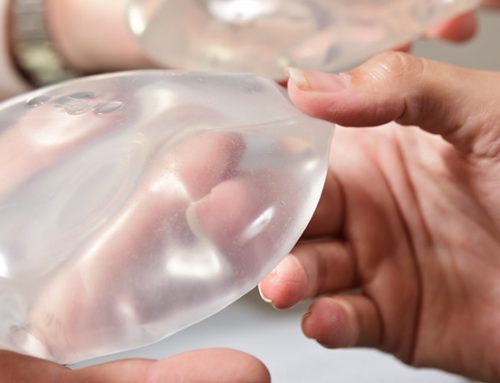Many prospective patients wonder whether or not they need a tummy tuck or liposuction in order to improve the appearance of their abdomen. Their confusion is not surprising given some of the misinformation and mis-understanding that exists about both procedures. Hopefully, this article can clarify what each procedure can realistically accomplish as well as what each involves so that you can have a better understanding of which one would work for you.
When evaluating a patient for any procedure it is important to find out what they are hoping to accomplish and what they are willing to accept in recovery time, scars and expense. I call these the trade offs.
Each patient is different and therefore the result they can expect to achieve will be different. For instance, an overweight patient bothered by overhanging abdominal skin should not expect a tummy tuck to make them skinny; however, it will remove all of the excess lower abdominal skin and fatty tissue. This will certainly help with their appearance and hygiene as well as allow them to wear different styles of clothes that they may not have felt comfortable in prior to surgery.
Similarly, liposuction should not be viewed as a means of losing weight or tightening skin. It is a procedure used to shape areas of the body that are full due to excess fat. Many patients ask the question “how much weight will I lose?“ These patients are likely to be very unhappy if their main motivation is weight loss. Realistic expectations are key to being happy with your result and your decision to have surgery. Open dialogue with your plastic surgeon, a thorough examination and honesty about what can and can’t be achieved are paramount to a good outcome and a happy patient.
With this in mind, how do you know what is right for you? Let’s start by looking at the three basic components of the abdomen that create problems with its appearance. The first, and most obvious, is the amount of fat present. Excess fat can be treated either with liposuction or by direct excision (a tummy tuck). Either method removes only the fat between the skin and the abdominal musculature.
Intra-abdominal fat (fat around the intestines) is not addressed by either procedure. If this is a significant contributing factor to the fullness of your abdomen then neither procedure may be for you. This is particularly common in men with very rotund rounded abdomens or “beer bellies”. Although this is more common in men, women are not immune to this problem.
To evaluate this, tighten your abdominal muscles and see how thick the tissues are that you can pinch between your fingers. If you are not getting much more than an inch then you will likely be better served with a good weight loss and exercise program than with surgery. The second component to look at is the quality of your skin. More specifically, what is the elastic quality of your skin? Nice elastic skin snaps back fairly rapidly when pulled away from the body and is of paramount importance to successful liposuction.
Contrary to many claims, liposuction of any kind has not been shown to tighten skin. If your abdominal skin is already overhanging, loose or damaged by stretch marks, liposuction will not improve and will likely worsen these problems. I like to use the analogy of deflating a balloon. If you blow up a new balloon and deflate it soon thereafter, it will snap back to its original size but if you wait several hours before you let the air out, it will have lost some of its elasticity and will not return to the original size. It will look loose and stretched out. Similarly, if your skin elasticity is poor it will not contract to its original size after liposuction. In this case an abdominoplasty—in which the loose skin is removed—will be required in order to get the desired result.
The final component that needs evaluation is the condition of the abdominal muscles, specifically whether or not there is a bulge caused by separation of the rectus abdominus muscles. This separation is called a diastasis and it is not considered a hernia.
Caused by pregnancy or excessive weight, it can produce a lower abdominal bulge or even an upper abdominal bulge depending on how large it is. The muscle edges move away from each other to accommodate the excess intra abdominal volume.
In some “lucky” patients the edges of the muscles return to their normal position after giving birth or losing weight, but in many they remain separated, leaving them with an unpleasant bulge that no amount of abdominal exercise will improve. Correcting this problem requires realigning the muscles back to their intended position. Muscle tightening or realignment is part of most tummy tucks but is not part of a liposuction procedure.
One of the biggest trade-offs of having a tummy tuck is a lower abdominal scar. The length of the scar can vary depending on how much skin needs to be removed. A mini abdominoplasty will produce a scar similar in size to a caesarian section. With this procedure abdominal muscles can be tightened and liposuction is performed as needed. Very little if any skin is removed.
A modified abdominoplasty removes more skin and as a consequence, the scar is longer but still remains confined to the pelvis for the most part. Muscles are tightened and liposuction is performed to address muscle laxity and excess fat if indicated.
A full abdominoplasty removes all the skin and underlying fat from just above the belly button to the upper pelvic area. This provides maximal tightening of the upper abdominal skin and some elevation/rejuvenation of the pubic area and anterior thighs. Excision of this much skin results in a scar that goes across the lower abdomen from hip to hip and a scar around the belly button.
Recovery from these procedures is a very individual thing, but for the most part it gets tougher as you move from liposuction to abdominoplasty. Liposuction patients can feel generally pretty good after 2-3 days. Most are getting around normally at this stage with only minor soreness and stiffness.
A full abdominoplasty generally requires 2 weeks to feel reasonable and the first five days are generally pretty tough. Patients need help getting out of bed and typically walk a little bent over for the first 7-10 days, until the tightness and swelling begin to resolve. Most are driving themselves by 2 weeks, if not sooner, and have resumed non-strenuous everyday activities. Mini and modified abdominoplasties fall in between liposuction and full abdominoplasties in their recovery time. With these procedures patients feel less tight; this helps them recover more quickly.
As you can see, there are multiple factors that go into deciding whether liposuction or a tummy tuck is for you. Both procedures can produce excellent results when performed on the right patient for the right reasons. If you are thinking about having either procedure you should seek consultation with a plastic surgeon certified by the American Board of Plastic and Reconstructive Surgery. During your consultation the surgeon should examine you, go over why they are recommending a particular procedure, discuss the risks and benefits of the procedure, what to expect during your recovery and all the financial aspects of the procedure.
Liposuction and tummy tucks are both powerful procedures that can dramatically improve your appearance as well as your psyche. One just needs to understand what to expect going in to surgery to be happy coming out of surgery.




